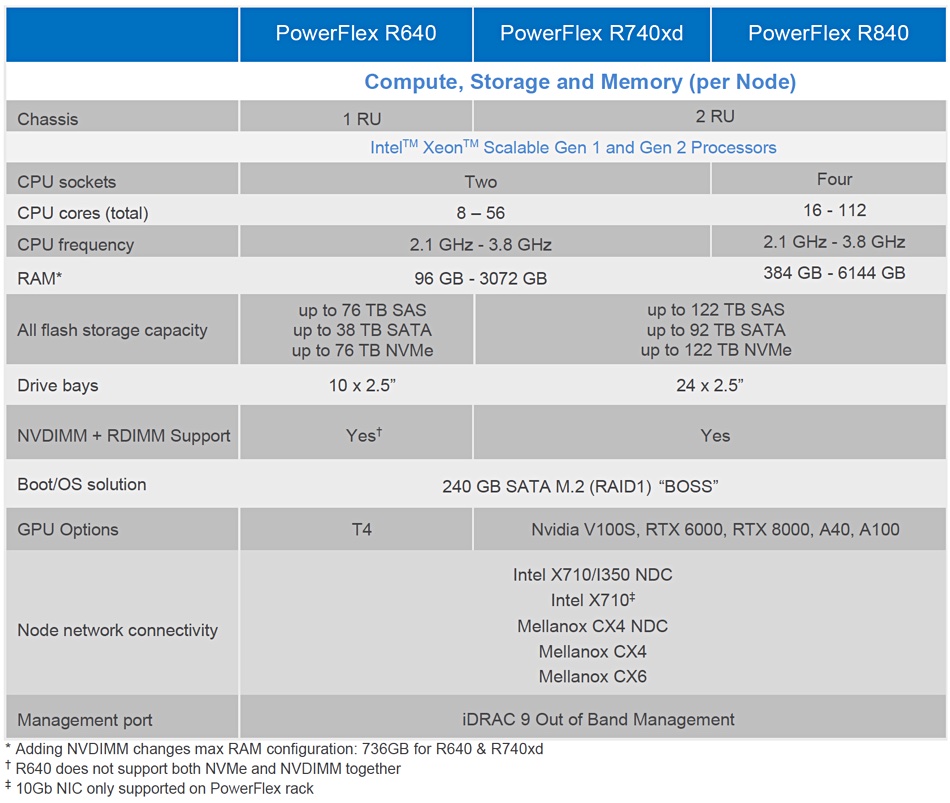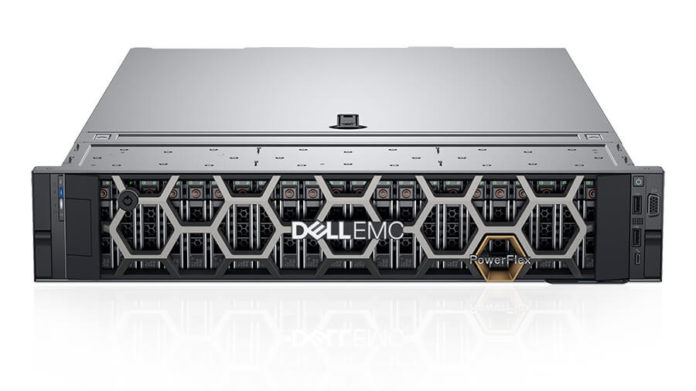Dell EMC has updated its PowerFlex software, widening GPU and hypervisor support and improving resiliency and manageability.
PowerFlex is Dell EMC’s scale-out virtual SAN and hyper-converged system with multi-hypervisor support, unlike VxRail’s vSphere-only focus. It’s available in rack or appliance formats, and scales out to thousands of nodes. The system was launched a year ago as a ScaleIO upgrade and rebrand.
Michael Richtberg, a Dell EMC Chief Strategy Architect, said in a blog we saw before its publication: “The release is designed to help you execute flawlessly with extensive automation capabilities and superior execution of resource-intensive workloads. It also enables you to comply with regulatory, compliance and corporate requirements while enabling you to operate your large-scale infrastructure confidently and predictably.”

PowerFlex v3.6 adds support for:
- Nvidia T4, RTX 6000, RTX 8000, A40 and A100 GPUs;
- Kubernetes CSI driver v1.5;
- OpenShift v4.6 with CoreOS;
- Oracle Enterprise Linux KVM hypervisor;
- Storage Replication Adapter (SRA) for VMware vCenter Site Recovery Manager (SRM);
- FIPS 140-2 support for security-sensitive use cases;
- VMware NSX-T for scale-out networking;
- Dell EMC AppSync for app-consistent data protection and copy data management;
- CloudIQ monitoring, machine learning and predictive analytics;
- Proactive network error detection;
- Proactive network path correction;
- Support for up to 2048 compute node clients in PowerFlex 2-layer mode, with independent scaling of compute and storage nodes;
- Guided user PowerFlex Manager feature to simplify the upgrade process.
PowerFlex Ansible modules have been added for customers looking to unify administration and resource provisioning using an open standards framework.
Version 3.6 also has a preview of coming Dell EMC Container Storage Modules (CSM):
- Observability — exportable telemetry metrics for I/O performance and storage pool consumption;
- Authorisation — multi-tenancy RBAC management controls (eg tenant segmentation, setting quota limits, isolation, auditing);
- Resiliency — stateful application fault protection and detection, providing resiliency for node failure and network disruptions.
This release improves the configurable replication RPO (recovery point objectives) time to as low as 15 seconds, while extending the replication to Hyperconverged (HCI) nodes and configurations.
You can download a PowerFlex Solution Brief and a PowerFlex family spec sheet to find out more.








